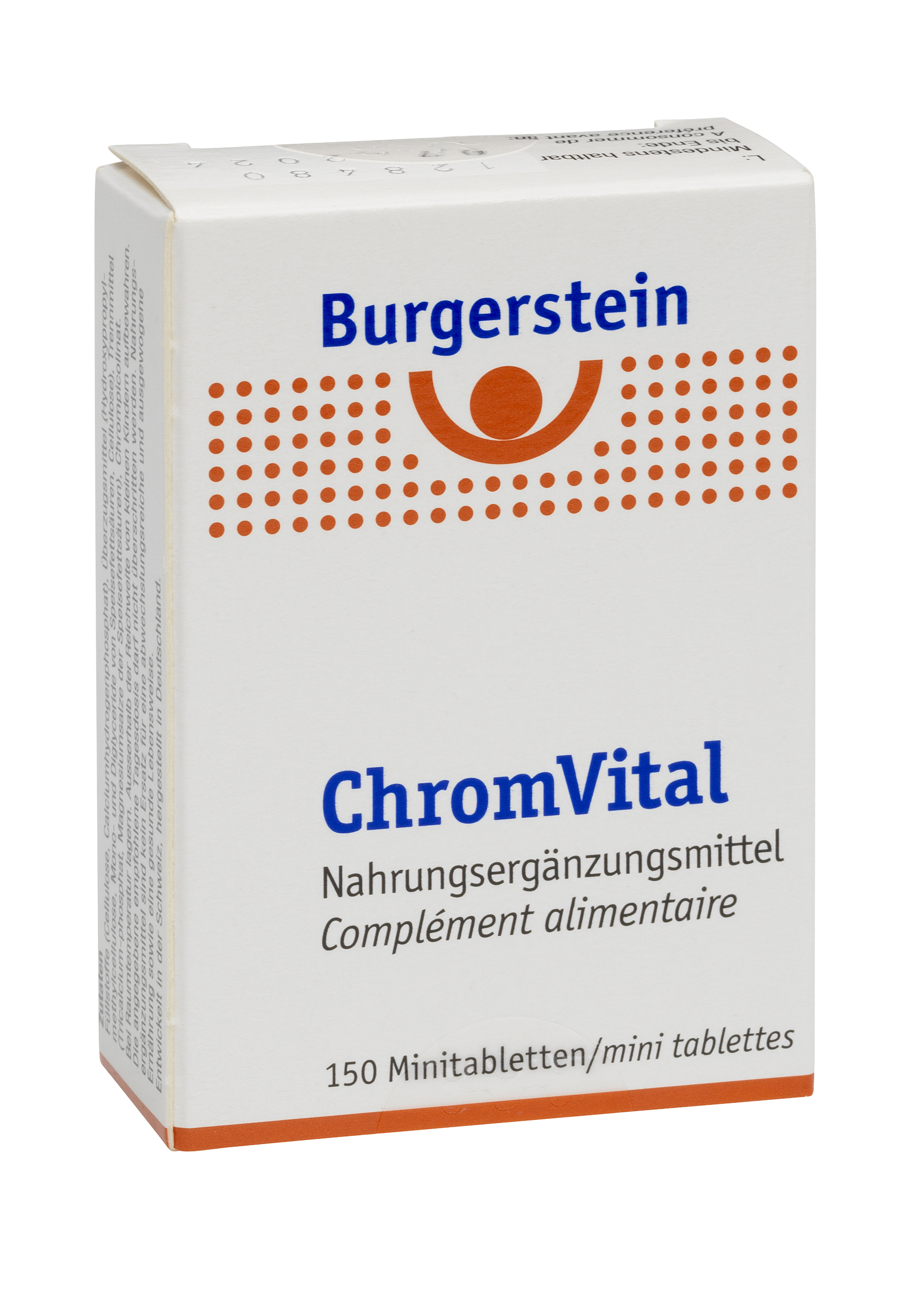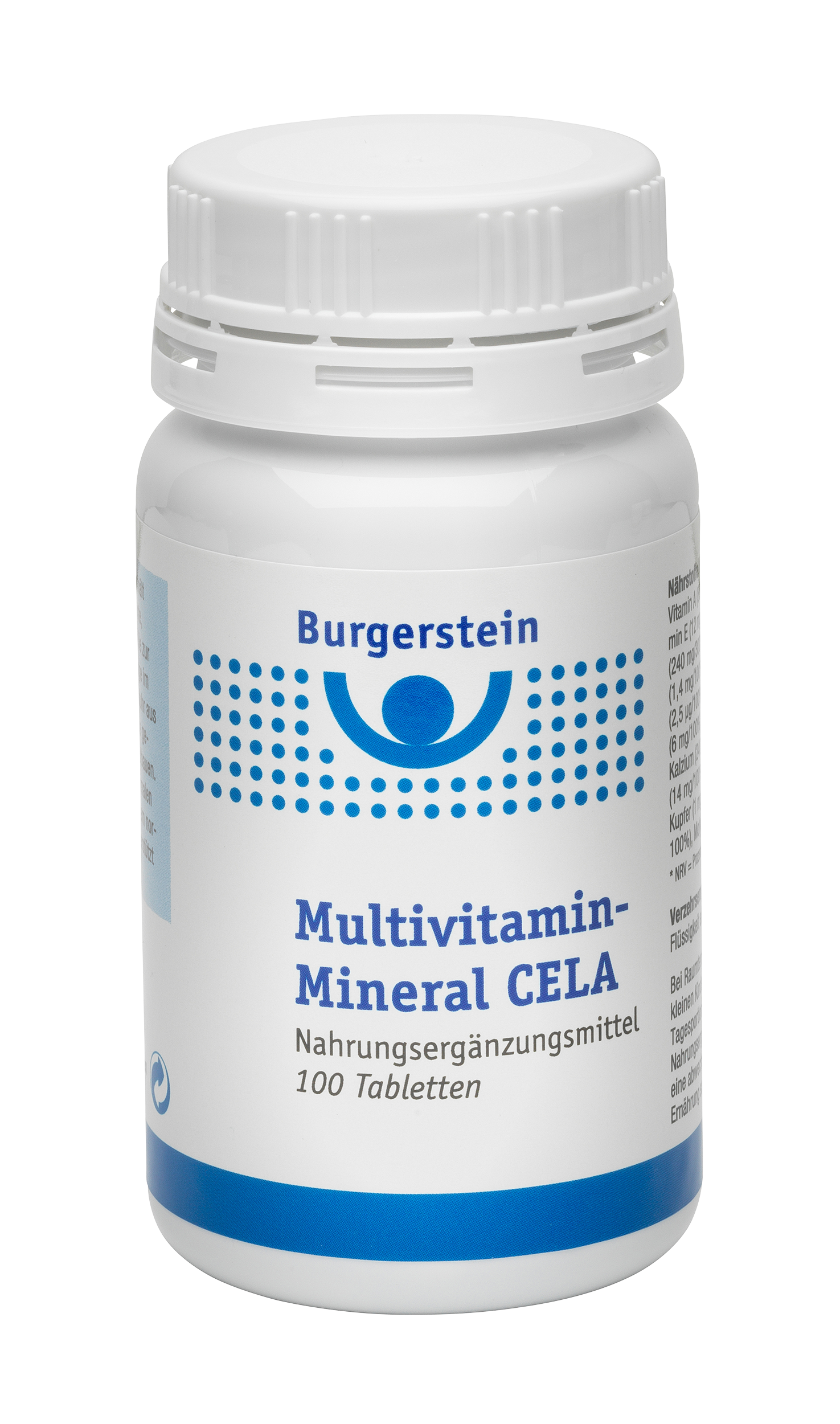Chromium
Chromium is involved in various metabolic processes. The trace element fulfils important tasks in sugar metabolism by improving the absorption of glucose into the cells.
Functions of chromium in the body
- Sugar metabolism
Chromium is considered an enhancer of insulin action (participation in signal transduction at the insulin receptor) - insulin sensitivity of the cell is increased and glucose can be better absorbed into the cells. Thus, glucose tolerance and utilization improves.
- Amino acid metabolism
Chromium enables the incorporation of the amino acids' glycine, serine, methionine and GABA into heart tissue.
- Cell division
Chromium increases the formation of ribonucleic acid (RNA) in the cell nucleus, a substance important for the conversion of genetic information.
When does taking chromium make sense?
- For obesity
Chromium may help reduce uncontrolled binge-eating by reducing the desire for sweets.
Dosage: 600 μg/day for 2 months. - For arteriosclerosis
Chromium reduces the formation of molecules that contribute to atherosclerosis. In addition, heart attack and angina pectoris patients have blood chromium levels about 5 to 8 times lower than patients without atherosclerotic manifestations. - For diabetes
Due to the influence of chromium on sugar metabolism, the administration of chromium picolinate (1000 μg/day for 3-4 months) can be expected to reduce fasting sugar by about 1.5 mmol.
- For sports activity
Chromium losses after athletic performance can be very high. A balanced chromium balance protects the athlete from a rapid drop in carbohydrate reserves in the muscle. Thus, athletic performance can be maintained for longer.
Can chromium be overdosed?
No abnormalities were observed with habitual consumption of up to 200 μg chromium per day; likewise, no abnormalities were observed with monthly chromium doses of 1000 μg/day in diabetics.
However, hexavalent chromium, which is often used as a workplace chemical, has carcinogenic properties.
Good to know about chrome
- The daily requirement is 30-100 μg
- Stress, infections and sports lead to increased chromium excretion
- The absorption of chromium can be improved by an additional intake of vitamin C
- Trivalent chromium compounds, such as those found in supplements, have a low level of toxicity
- Chromium is less readily utilized with increasing age
What are the deficiency symptoms?
- Elevated blood glucose after a meal
- Partially severe drop in blood glucose (hypoglycaemia), which can lead to symptoms such as lack of energy, cold sweats, or difficulty concentrating
- Nerve disorders (neuropathies)
Chromium bioavailability
In nature, chromium occurs in different compounds. In foods and supplements, chromium is present in the so-called trivalent form. The absorption capacity of the chromium contained in foods is usually 0.5 - 3 %.
Inorganic chromium compounds such as chromium chloride should no longer be used in nutritional supplements due to their low absorption capacity (approx. 0.1-1 %). Better are organic forms like chromium picolinate or chromium yeast with 10-20 times better absorption capacity.
Tip: Just as with iron, the absorption of chromium improves if vitamin C is also added.




